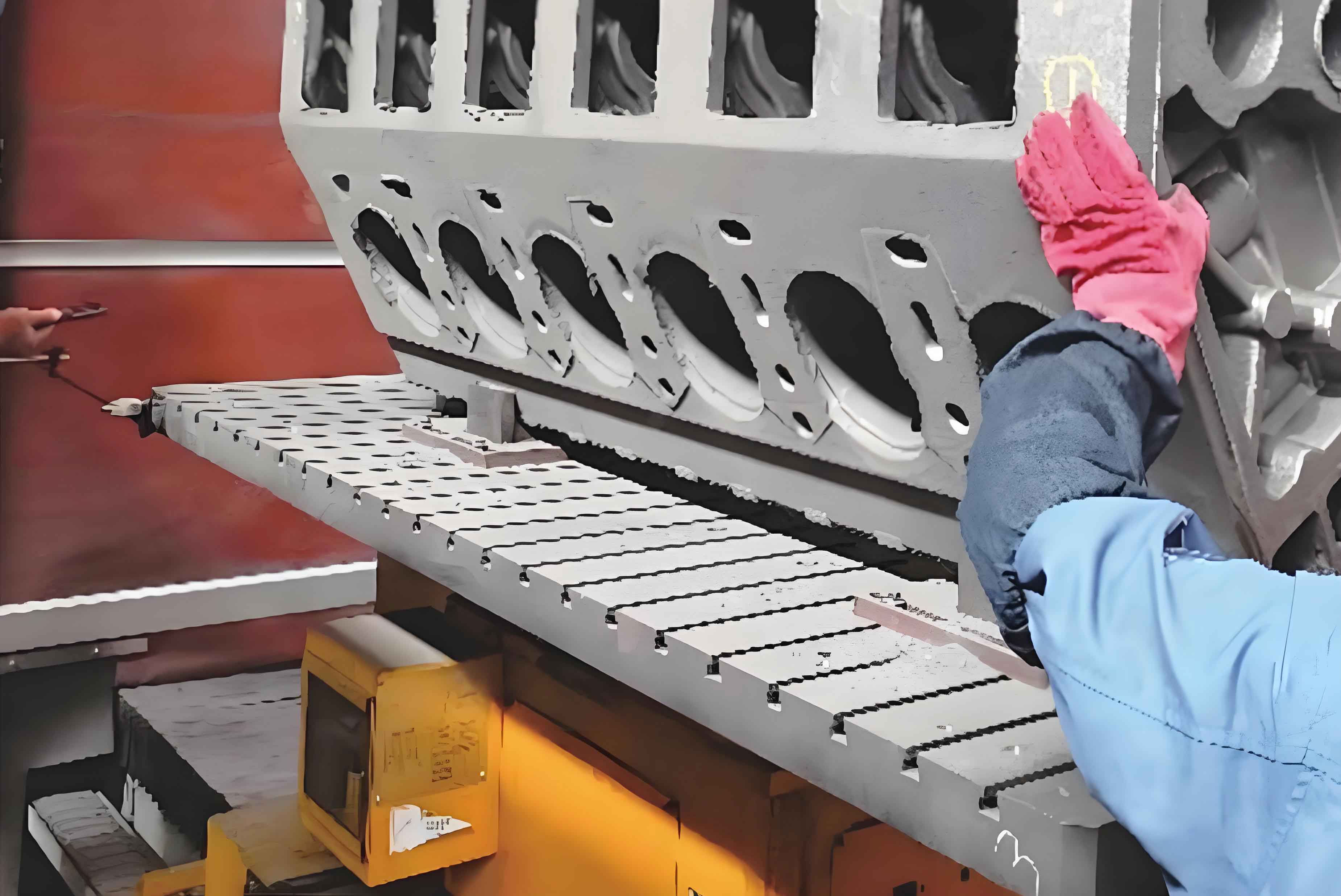This study addresses multi-objective flexible job shop scheduling problems in engine cylinder block production by integrating agile manufacturing principles with improved NSGA-II algorithms. Focusing on minimizing makespan and machining costs while enhancing equipment utilization, we propose a systematic approach to optimize production planning under dynamic market demands.
1. Problem Formulation and Mathematical Modeling
The engine cylinder block manufacturing process involves 7 critical operations: precision machining of base surfaces, deep hole processing, cylinder bore machining, main bearing/camshaft bore machining, tappet hole processing, multi-face hole system machining, and final surface finishing. The scheduling problem is formulated with dual objectives:
$$ f_1 = \min(\max(\omega_k)) $$
$$ f_2 = \min\left(\sum_{i=1}^{n}\sum_{j=1}^{m}\sum_{k=1}^{K} C_{ijk} X_{ijk} T_{ijk}\right) $$
Subject to constraints:
$$ \sum_{k=1}^{K} X_{ijk} = 1 \quad \forall i,j $$
$$ e_{ij} \geq b_{ij} + T_{ijk} \quad \forall i,j,k $$
$$ b_{i(j+1)} \geq e_{ij} \quad \forall i,j $$
| Operation | M1 | M2 | M3 | M4 | M5 | M6 |
|---|---|---|---|---|---|---|
| Base Machining | 110 | 115 | 110 | 115 | 255 | 215 |
| Deep Hole | 109 | 112 | 107 | 180 | 194 | 222 |
| Cylinder Bore | 192 | 194 | 190 | 252 | 223 | 215 |
| Bearing Bores | 282 | 282 | 282 | 345 | 221 | 222 |
| Tappet Holes | 734 | 735 | 732 | 914 | 940 | 884 |
| Face Holes | 242 | 193 | 192 | 219 | 250 | 260 |
| Finishing | 140 | 148 | 141 | 148 | 152 | 152 |
2. Enhanced NSGA-II Algorithm Design
The improved algorithm incorporates adaptive crossover/mutation strategies and elite retention mechanisms:
$$ P_c(i) = P_{c1} + (P_{c2}-P_{c1}) \cdot \frac{i}{iter_{gen}} $$
$$ P_m(i) = P_{m1} + (P_{m2}-P_{m1}) \cdot \frac{i}{iter_{gen}} $$

3. Computational Results and Analysis
Experimental results demonstrate significant improvements in production efficiency:
| Metric | Manual | NSGA-II | Improved NSGA-II |
|---|---|---|---|
| Makespan (s) | 5465 | 4740 | 4374 |
| Cost (¥) | 7720 | 7452 | 7251 |
| Equipment Utilization | 60.95% | 65.35% | 66.79% |
| On-time Delivery | 87.5% | 93.1% | 97.8% |
The Pareto frontier analysis reveals optimal trade-offs between conflicting objectives:
$$ \text{Hypervolume Ratio} = 0.82 \pm 0.03 $$
$$ \text{Spread Metric} = 0.65 \pm 0.02 $$
4. System Implementation and Verification
The developed agile scheduling system achieves:
$$ \text{Production Planning Cycle Reduction} = 68.4\% $$
$$ \text{Schedule Adjustment Response Time} < 15 \text{ minutes} $$
Key system components include:
- Dual-layer integer encoding for operation sequencing
- Adaptive resource allocation module
- Real-time disturbance handling mechanism
5. Industrial Validation
Field tests with 8 engine cylinder block variants show consistent performance:
| Variant | Operations | Optimal Makespan | Cost Saving |
|---|---|---|---|
| A1-4L | 7 | 1990s | 6.0% |
| B2-Turbo | 9 | 2370s | 5.8% |
| C3-Hybrid | 11 | 2815s | 7.2% |
This research provides a practical framework for implementing agile manufacturing strategies in engine cylinder block production, effectively balancing operational efficiency with economic performance.
